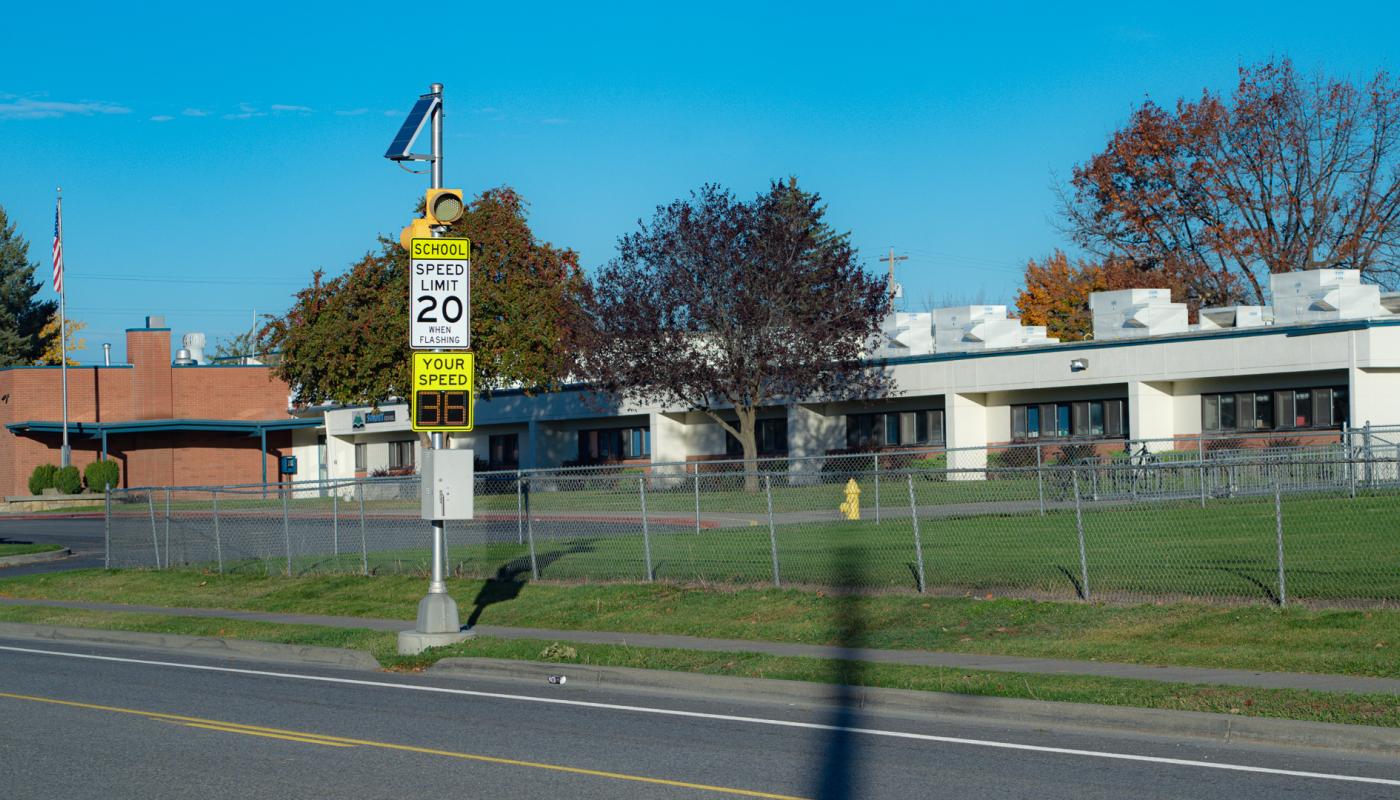Introduction
In the quest to fortify school zone safety, the deployment of Radar Speed Signs (RSS), also known within the industry as Dynamic Speed Feedback Signs (DSFS) or Driver Feedback Signs (DFS), has been a pivotal strategy. This comprehensive review and meta-analysis, focused primarily on school zones, evaluates the efficacy of these technologies in modulating vehicle speeds, thereby safeguarding pedestrian areas frequented by children. Through an exhaustive synthesis of literature, this study not only validates the utility of RSS in reducing vehicular speed but also underscores its significance as a cornerstone in traffic safety engineering.
Radar Speed Signs (RSS): A Cornerstone for Safer School Zones
Within the ambit of school zone safety, RSS have shown remarkable effectiveness. The analysis of 28 sites within school zones revealed that the activation of RSS led to a significant reduction in mean vehicle speed by approximately 3.21 mph across all vehicle types. Such reductions were observed during periods of sign activation and were sustained for up to 12 months, with peak reductions reaching up to 9 mph. These findings highlight the RSS's critical role in enhancing the safety of school zones, providing a safer environment for children.
The Meta-Analysis: A Closer Look at RSS Performance
Drawing from 43 publications and over 5,000 observations, this study presents a nuanced analysis of RSS's impact across various traffic settings, including work zones, transition zones, straight sections, and curves, besides school zones. The statistical approach underpinning the meta-analysis illuminates the significant reductions in mean speeds and the 85th percentile speeds, affirming the effectiveness of RSS in influencing driver behavior.
Key Hypotheses and Traffic Safety Implications
The study tests three key hypotheses: the activation effect, the downstream effect, and the deactivation (or halo) effect of RSS on vehicle speeds. These hypotheses collectively provide a comprehensive framework for understanding how RSS not only affect speeds in their immediate vicinity upon activation but also potentially influence vehicle speeds downstream, even after deactivation. For traffic engineers and policymakers, these insights are invaluable for optimizing the placement and utilization of RSS in traffic safety protocols.
Conclusion: Radar Speed Signs as Catalysts for Change
The deployment of Radar Speed Signs (RSS) in school zones has emerged as an effective measure for reducing vehicle speeds, thereby mitigating the risk of accidents and enhancing pedestrian safety. The substantial evidence gathered through this meta-analysis underscores the value of RSS in traffic safety initiatives, especially in environments where the well-being of child pedestrians is paramount. As communities continue to seek solutions for safer roads, the integration of RSS, DSFS, and DFB into traffic management practices offers a proven, impactful approach to protecting lives.
Further Reading
For those interested in exploring the detailed methodologies, findings, and broader implications of this comprehensive review and meta-analysis, the full whitepaper is available for download:
FAQ: Enhancing School Zone Safety
What are the benefits of using modified signs and flashing beacons in school zones?
Modified signs and flashing beacons lead to significant reductions in vehicle speeds, elevate driver awareness, and consequently improve pedestrian safety in school zones. Their visual prominence and dynamic nature make them highly effective in alerting drivers to the need for reduced speed.
How does the public perceive these safety measures?
Generally, the reception of these measures by the public, including parents, educators, and law enforcement, is overwhelmingly positive. Their visible impact on safety and speed reduction garners support and appreciation from the community, enhancing the overall commitment to school zone safety.
Can these solutions be implemented in any school zone?
While especially beneficial for school zones located on multilane roadways, the adaptability of modified signs and flashing beacons allows for their effective implementation across a diverse range of urban and suburban settings. Tailoring these solutions to the specific needs and traffic patterns of each school zone maximizes their effectiveness.
Are there technological advancements that could complement these measures?
Indeed, the integration of radar speed signs (RSS) or driver feedback signs (DFS) with traditional signage strategies can further bolster the effectiveness of school zone safety measures. Providing real-time speed feedback to drivers can reinforce safe driving behaviors and compliance with speed limits.
What are the key considerations for municipalities looking to implement similar initiatives?
Municipalities considering the implementation of such safety measures should evaluate the unique characteristics of each school zone, including traffic volume, roadway layout, and peak crossing times. Tailoring solutions to meet these specific requirements ensures that safety interventions are both effective and responsive to local needs.
By embracing innovative approaches to school zone safety, such as those demonstrated in Des Moines, communities can significantly enhance the safety and well-being of children and all pedestrians navigating these critical areas.
